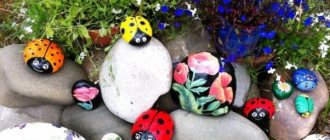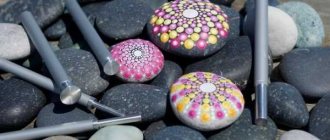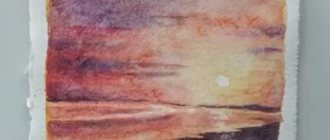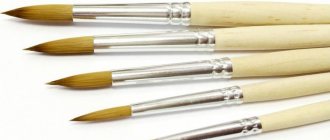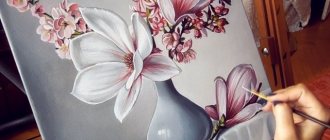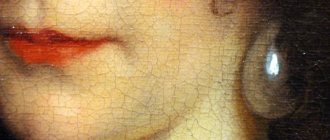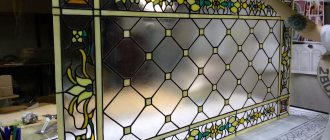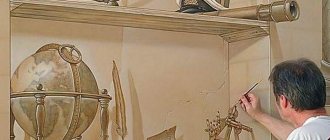Painting on fabric is a fascinating activity that remains a very popular type of needlework today. Manufacturers offer a wide range of fabric dyes - from traditional to innovative. Our article will help you understand the most popular types and decide on the choice of paint to achieve the best result.
Painting fabric with acrylic paints: pros and cons
Acrylic is the best polymer dye for clothing. When painting, pigments do not seep into the fibers, but remain on the surface, forming a film. The painted surface of the fabric becomes denser and becomes less elastic. Acrylic paint allows you to create bright, multi-colored, water-resistant images on clothing. The palette is rich, colors can be mixed to create additional shades.
Acrylic fabric paints are subject to high safety requirements. They are made from environmentally friendly components that are odorless and do not cause an allergic reaction.
Acrylic is an ideal option for beginning craftswomen.
Advantages and disadvantages
environmental safety, harmlessness to health;
safe components in the composition - pigments, water, natural or synthetic resins, plasticizers;
ease of use;
easy-to-apply texture;
quick drying with the formation of a protective surface film;
Possibility of diluting with water, mixing paints to obtain many shades;
waterproof coating that can withstand repeated washings;
wide range, constant availability in stores.
over time, acrylic loses its quality characteristics, so the paint will have to be thrown away after the expiration date;
The fabric requires the application of enclosing contours, since water-based paint is fluid.
Material selection
For re-dying and painting, natural materials are considered the most suitable - linen, wool, cotton fabrics, natural silk. Also, very good results are obtained when working with textiles containing no more than 60% synthetic fibers. The color applies beautifully and evenly to such materials. The problem of tinting completely artificial fabrics was solved by Jacquard iDye Poly paint, the use of which makes it possible to remove restrictions on the requirements for the composition of textiles.
What fabric is suitable
Acrylic coating is not afraid of moisture; you can paint any wardrobe items and fabric accessories: jeans, T-shirt, bag, jacket, umbrella, raincoat, scarf. You can also make wonderful panels to decorate walls, napkins and tablecloths for the festive table.
You cannot paint with acrylic paint only:
- bedding (due to frequent washing, the color will quickly fade);
- underwear (constant friction against the skin can provoke an allergic reaction);
- things that have to be dry cleaned;
- clothes for babies and children of younger kindergarten age (paint may be an allergen for a fragile child’s body).
When choosing paint, take into account the type of fabric. To do this, look at the markings on the container with the dye:
- “Silk” - this inscription on the jar indicates that the dyed fabric is not particularly compacted, so even thin things can be dyed: silk, cambric, chiffon.
- “Textile” – the label indicates that the paint is optimal for thick fabric. It can be used to paint furniture fabrics, even leather and suede products.
See also
Top 12 types of aerosol paints in cans for decoration and how to use
How to care for a painted product
Once the item has been painted and dried, it is followed by proper care, thanks to which the paint will last a long time and remain bright.
The product should only be washed at a temperature not exceeding 40 degrees. The amount of powder should be minimal; the product is used without bleach. When washing by hand: do not twist the fabric or rub in the area where the pattern is located. Before washing, the product is turned inside out, and then straightened out and hung on a clothesline. The item cannot be soaked. Iron carefully, from the inside out.
You might be interested in this: How to sew a christening shirt for boys and girls
If you follow the recommendations, acrylic painting on fabric will last a very long time.
Preparatory steps before drawing
Acrylic paint should be applied to clean fabric, so before painting, clothes must be thoroughly washed, kept in cold water for about an hour, dried thoroughly, and ironed. It is better to hang silk or other thin fabric in a straightened state on the crossbar and leave it until completely dry.
When performing some dyeing techniques, craftswomen use a hoop or a self-made frame. But usually there is no need to stretch the material too much; lying on a flat and hard horizontal surface, it will paint well. Paint with acrylic in a well-lit room.
Expert opinion
Zakharova Irina Yurievna
Cleaning professional with 15 years of experience. Our best expert.
Ask a Question
When dyeing a T-shirt or other two-layer garment, place cardboard between the front and back surfaces to prevent the dye from staining the back side.
When painting fabric, it is important to choose the right acrylic dye. Paints are available for light and dark fabric bases. If the canvas is dark, then before applying acrylic it is advisable to apply a light primer.
Acrylic paints are sold in jars, cylinders, and tubes. The most popular products are from manufacturers Decola, Marabu, Dylon, Simplicol. The products include, in addition to the paints themselves, auxiliary materials:
- brushes;
- solvents for adjusting the density of the dye;
- fabric pencils;
- compositions for creating contours;
- stencils.
Paint for clothes in cans
There is another option - spray paint for clothes. True, they have their own specifics, which lies in the features of use. In fact, you can apply something like graffiti to a T-shirt or any other fabric (a curtain, for example). It looks interesting, since aerosol spraying of paint from a can allows you to create soft transitions and other unusual effects on clothing that are difficult to achieve with brushes. Spray paint for clothes is sold everywhere. You can ask a consultant at your nearest fabric store or order online. The price of a can is around 350 rubles, but it lasts a long time.
Stages of preparing clothes for drawing
After it has become clear what colors are used to paint on clothes, you should understand the technology directly. Applying designs to clothes is not that difficult. Especially if everything is done correctly.
- It is better to wash and dry your clothes well before work. Any paint will adhere better to a clean, dry cloth.
- After this, the clothes are ironed. This is not necessary, but drawing on a flat fabric without wrinkles will be much more convenient.
- The piece of fabric on which the design will be applied must be pulled onto the base. Almost like a real canvas. True, you shouldn’t pull your clothes too tight. It just needs to be conveniently laid, straightened and well fixed in the desired position.
- To do this, first cut out a base of sufficient size from thick cardboard (the size of the base should be slightly larger than the future drawing). After this, the base is covered with fabric and secured in this position using ordinary pins. By the way, the base will also not allow the fabric paint to be printed onto another layer (for example, when applying a design to a T-shirt).
- Now you can pick up brushes and paint for painting on clothes and feel like a real master!
How to draw on clothes with your own hands?
How to prepare fabric for work and what colors to paint on clothes is now clear. It remains to clarify the last step - how exactly to draw on clothes? It's simple.
The sketch previously drawn on paper is carefully transferred to the clothing using a pencil. Then they just start coloring it with paints.
In this case, you need to follow an important rule: the paint for painting on clothes is light first, and then dark. This is explained simply
If at the first stage of drawing something cannot be drawn correctly, the problem area can be easily painted over with darker paint. But it’s no longer possible to do the opposite. When the drawing is ready, it is ironed from the wrong side. In this case, the paint for painting will adhere well to the clothes, and the item can be used!
This is how paint is used to paint on clothes. If you achieve mastery in drawing on fabric, you can not only revive boring clothes (which have been gathering dust somewhere in a closet on the back shelves for a long time), but also actually create your own fashion, decorate your home, and give unique gifts to friends and family. And professionalism will allow you to sell your products via the Internet or fulfill orders. But the most important thing is the pleasure and pride that this work was done with your own hands!
Save
Save
Acrylic painting technology
Painting fabric with acrylic paint is batik. The uniqueness of the painting is that a fixing composition is used to obtain a limiting contour at the junction of two pigments.
The basis for dissolving acrylic paint is water, but many artists prefer to use special solvents. When using water, the image is matte; when using solvent, it is glossy. To fix the pigment, you need to walk over the dried canvas with an iron.
Hot batik
The hot batik method is used to dye natural dense fabrics: linen, cotton, jeans, viscose. To obtain a multi-color image with clear contours, melted wax is used. Under the wax lines applied to the fabric, white or another original color of the material remains.
To apply wax, you should use a chanting tool - a pen with a small vessel and a writing spout. Before starting work, you need to melt the wax.
For a beginner, you can take a wax candle for training. Experienced craftsmen make the material themselves - from paraffin, fat, dammar, beeswax, pine resin.
See also
Technical characteristics of OS-12-03 and consumption of organosilicate composition
Work algorithm:
- Select an image. Transfer it onto fabric using tracing paper or another method.
- Cover the areas of the picture that should not be touched by paint with melted wax. Leave until completely dry.
- Paint the canvas with acrylic dye. Wait for it to dry.
- Remove the wax coating using paper, heating the fabric through it, carefully peeling off the mixture.
- If necessary, cover other areas with wax, and paint the canvas again with a different color.
Cold batik
The method differs from hot batik by using not wax, but a special composition called reserving. Therefore, the technique is called redundancy in another way.
The work algorithm is generally similar: coat the required areas of the fabric with a paint-impermeable composition, then paint the free part of the fabric. After the acrylic coating has dried, remove the backup contours. The result will be a multi-color image with clear outlines. Cold technique is optimal for creating stencil designs.
Knot batik
The technique allows you to create original abstract patterns with unusual color transitions. Optimal for creating original T-shirts, sundresses, tablecloths, napkins. Easy to perform, recommended for beginners.
Start by twisting small knots in the fabric. Next you need to paint as follows:
- Paint over the background if necessary. Dry the product.
- Place small pebbles or buttons in random places on the canvas. Twist into knots.
- Fold the fabric itself into several layers, twist it randomly, and tie it with thread to form a tight lump.
- Immerse in a container of paint and hold for a while.
- Take it out, dry it, straighten it.
Free painting
The technique is suitable for experienced craftsmen with artistic abilities. This is the usual creation of a picture without the use of stencils. An artist can draw any image, showing maximum imagination and skills.
To prevent acrylic paint from spreading, the fabric must be immersed in a saline solution for 2 hours. It is permissible to use a reserve substance; in its absence, a primer is required. To make it, mix PVA glue, starch and gelatin in equal proportions, apply it with a brush to the area to be painted, and wait until it dries completely.
Freehand painting is wet when acrylic paint is placed on wet fabric without using a stencil. The colors mix and flow into each other, resulting in a blurry, airy image reminiscent of watercolors.
Airbrush
This acrylic painting technique also requires artistic skills. To paint fabric, you need to purchase an airbrush - a special type of spray gun for comfortable distribution of paint at a distance of 20-30 cm from the canvas. By moving the device closer and further away, changing the spray angle, you can create interesting effects and different shades.
See also
Types of primers for liquid wallpaper and which one to choose, how to apply it yourself
Shibori technique
Japanese technique is a type of knot technique. Only the fabric is not tied in knots, but twisted and folded in different ways, similar to the principle of folding paper origami. The master does not know what the drawing will be like until he unrolls the dried canvas.
History of the appearance of dyes
Since ancient times, people have used natural dyes to give fabrics a certain color. For example, indigo dye was obtained from plants containing the substance “indican glycoside”. The plants were soaked until the natural fermentation process began. The fermented liquid was poured into special ditches, where it oxidized. It was this dye that was originally used to dye denim. A chemical analogue of indigo was invented only at the beginning of the last century.
Another natural dye is purple. It was obtained from the liquid secreted by the mollusk Murexbandaris. Another dye was obtained from the roots of the Madder plant. The Romans and Egyptians used ocher, which consists of iron oxide with clay.
Also, plants such as turmeric and sage were used to dye fabrics.
Industrial dyeing of fabrics dates back to the second half of the 18th century with the invention of yellow dye - quercitron. By the end of the 18th century, a new method of painting appeared - using chrome.
However, people wanted to wear more and more varied and colorful fabrics. By the end of the 18th century, picric acid began to be widely used to dye fabrics yellow. As for bleaching, already at the end of the 18th century, chemists actively used chlorine for this. By the end of the 19th century, synthetic dyes fuchsin (bright red) and mauvais (purple) appeared.
And by the beginning of the 20th century, artificial dyes already outnumbered natural ones. The main dye-producing countries of that time included Germany, England, and France. In Russia, before the First World War, artificial dyes were supplied mainly from Germany. Only during the war did Russia begin to develop its own production at a rapid pace.
Interesting ideas for original works
Anyone can create beautiful paintings with acrylic paints. Even a child can be taught to dye fabric: he will have something to do without distracting his mother from household chores. Creating acrylic paintings is an extremely exciting activity; you only need to try it once to become seriously interested. Fortunately, there are plenty of ideas.
Create fashionable clothes and accessories for the whole family with your own hands and decorate the interior. Curtains painted with acrylic, decorative pillows for sofas, wall panels, tablecloths, and interior curtains look great.
Mix batik techniques. For example, complement the stencil technique with an airbrush, working with it at a distance: you will get beautiful splashes. Decorate finished paintings with beads, seed beads, sparkles, and decorative stones. For clothes of a certain style, choose suitable designs: ethnic ornaments, mandalas, religious symbols.
Types of coloring and nuances of techniques
There are the following methods of applying paint:
- manually with a brush;
- with stencil;
- with a textured roller, rolling pin;
- heel - special prints with three-dimensional images;
- using a foam swab;
- combinations of brush work with relief contours.
Using the batik painting technique, you must secure the edges, individual sections or all fields of the design so that the colors do not mix. For these purposes, a reserve circuit is used. This is a type of composition that is capable of fixing paint so that it does not merge with adjacent paint of a different color. You can call such a product in other words – paint protection. Another name for it is a fixative for an already applied coating.
Painting with a brush and acrylic paints on fabric Source gidpokraske.ru
Plywood stencils for creating designs on denim with acrylic paint Source shebby-shik.ru
A wooden textured rolling pin does an excellent job of applying acrylic paint Source tais-wear.ru
